Once the range and bearing of a target had been established, a magslip system would be used to transmit the information to the EXDO towers.
There were telephones installed but, to avoid any misunderstandings, it was thought the magslip system was more reliable.
The diagram above illustrates the way in which the system operated. The system worked by using 3 equally spaced coils, known as stators.
When the dial on the transmitter was turned, it induced varying currents in the stators. The current in each would be different, depending on the angle.
Two magslips would be used, one for range, the other for bearing.
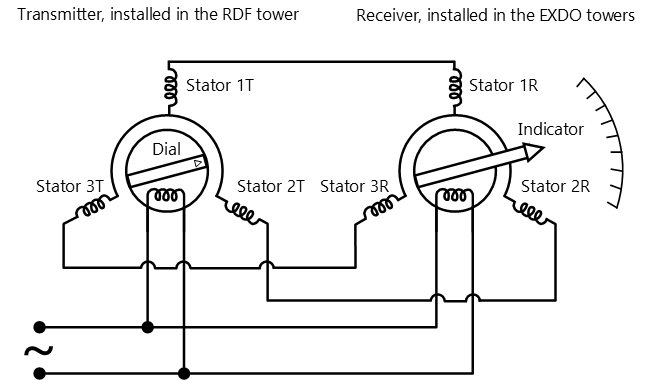
The dials on the transmitters would be set to indicate range and bearing, inducing current in 1T, 2T and 3T. This information would be sent to the receiver set, inducing the same current in 1R, 2R and 3R. This would cause the indicator to show the same range and bearing, allowing the crew in the EXDO tower to select and detonate the appropriate mines.
Magslip process
Step 1:
The aerial (array) would be rotated slowly across the minefield in sweeps until a strong response was received from a possible target. This would determine the bearing of the vessel. The distance of the response on the CRT screen would indicate the range.
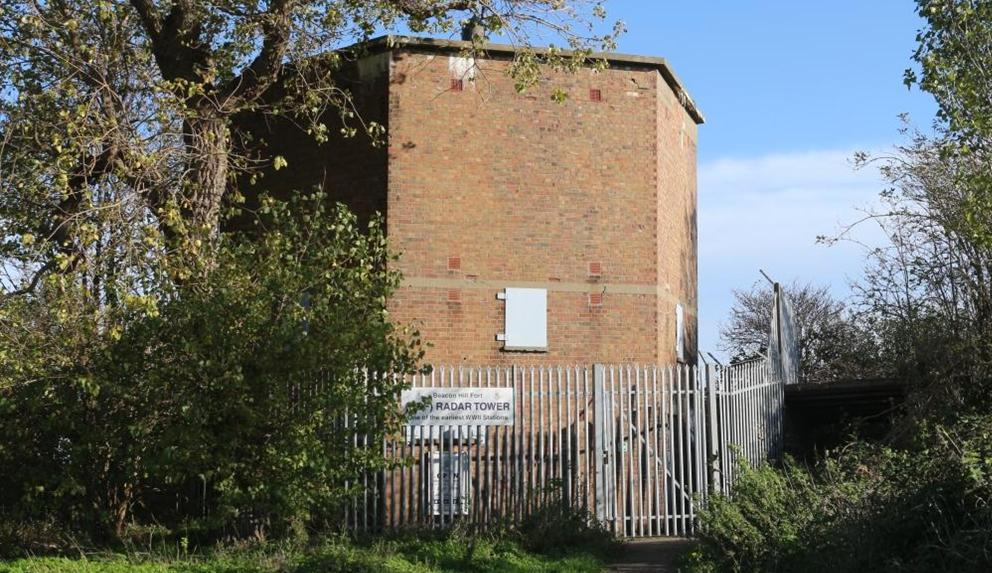


Step 2:
The bearing and range of the possible target would be sent via a magslip instrument to both EXDO towers simultaneously. Each tower would have been responsible for different areas of the minefield.
Step 3:
The bearing and range would be plotted on maps of the minefield in both of the EXDO towers. Once the exact location of the enemy vessel was determined, the appropriate mines would be selected and detonated.
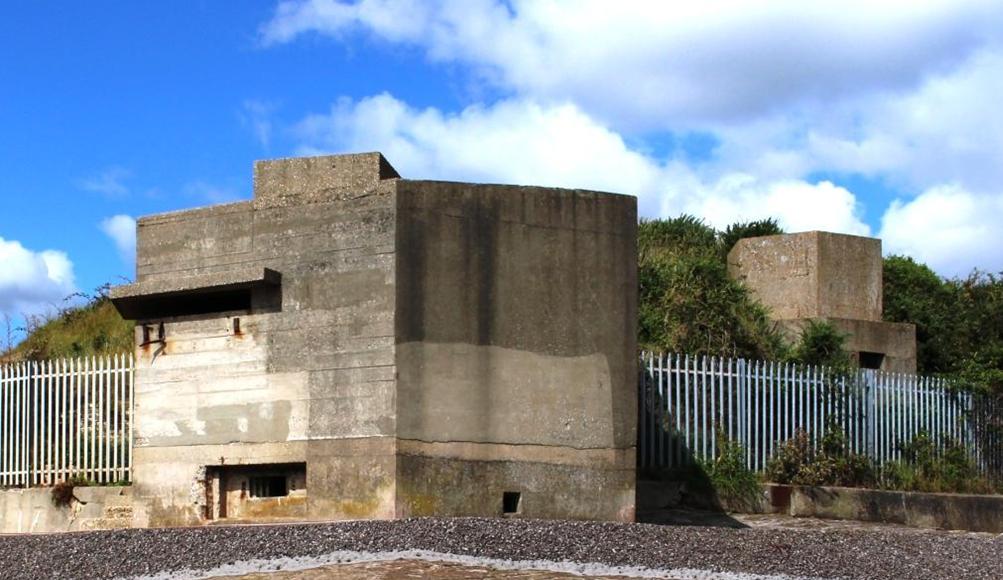
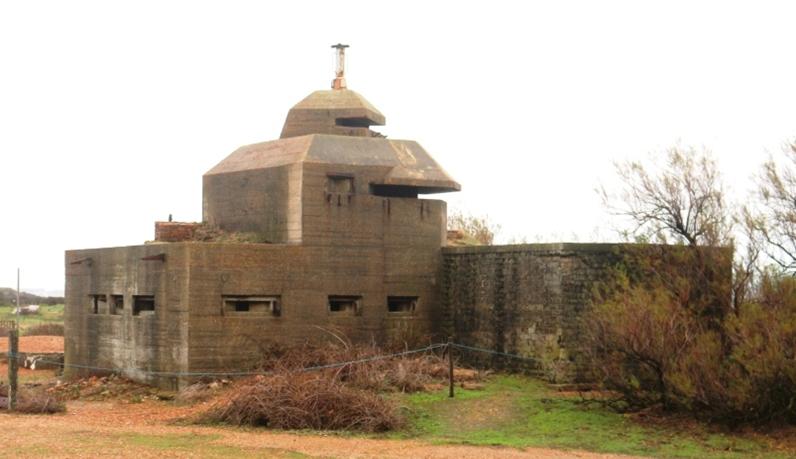
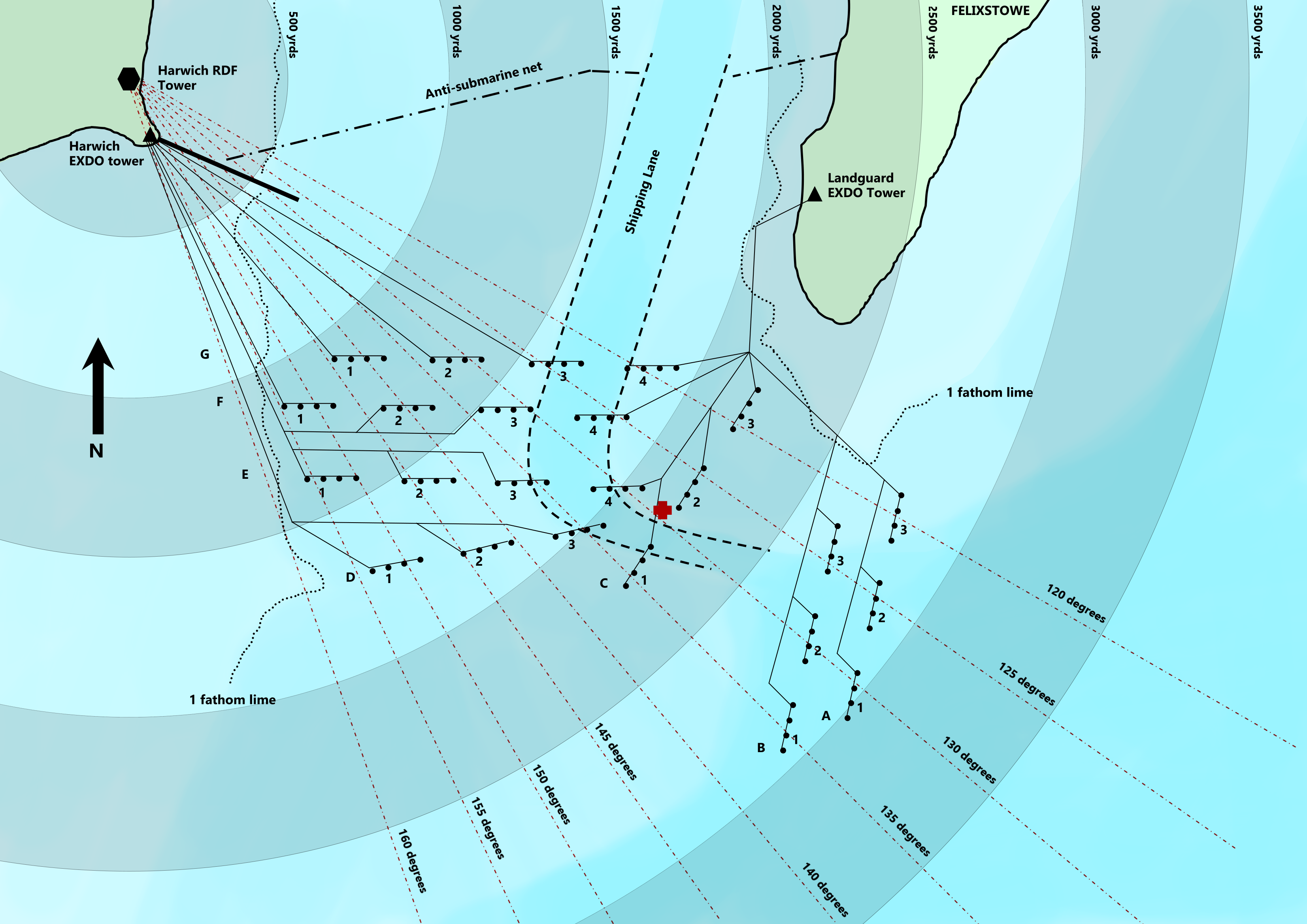
Step 4:
A range of 3000 yards and bearing of 130 degrees, for example, would require mines A1 – selected and detonated from Landguard EXDO.
A1-3, B1-3 and C1-4 were controlled from the Landguard EXDO tower
D1-3, E1-3, F1-3 and G1-3 were controlled from Harwich EXDO tower
marks the HMS Gipsy (wreck site)
Back Continue